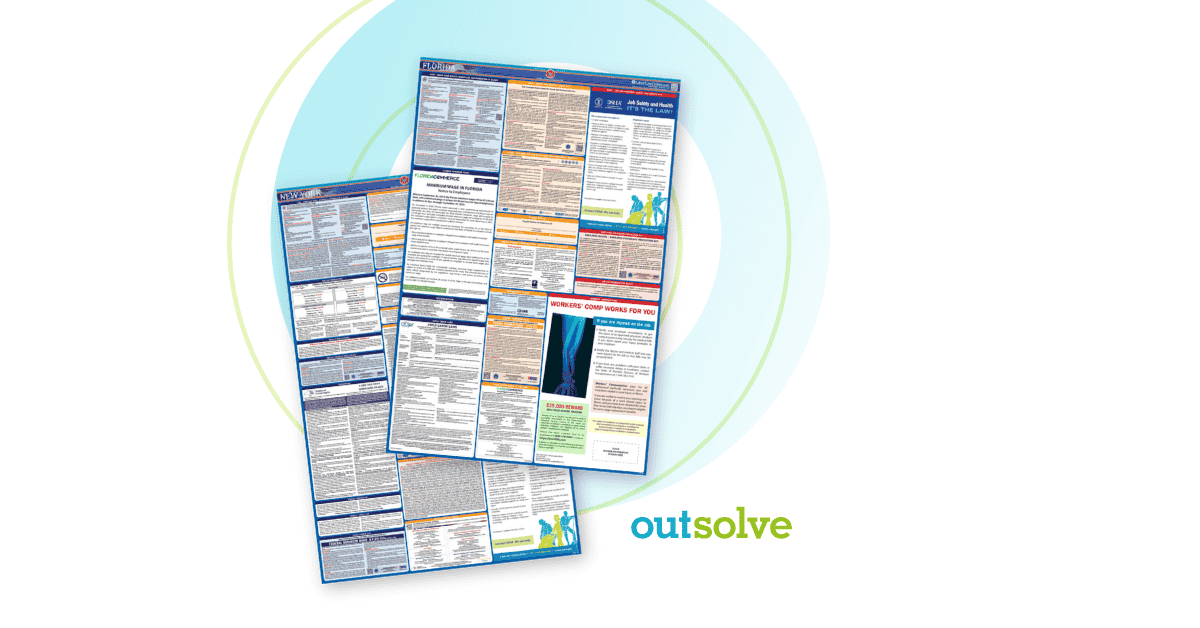7 min read
Compensation Benchmarking: The HR Leader’s Complete Guide
 Neil Dickinson
:
Mar 31, 2025 3:06:19 PM
Neil Dickinson
:
Mar 31, 2025 3:06:19 PM

Setting salaries can feel like a guessing game. If you pay employees too little, they leave for better offers. If you pay too much, you strain your budget and create pay compression. That’s where compensation benchmarking comes in.
Compensation benchmarking helps you compare your employee compensation against industry and market standards. And the stakes are high: More than half of employers surveyed by WTW are planning to conduct compensation reviews in 2025, signaling the importance business leaders are placing on pay.
This guide will walk you through what compensation benchmarking is, why it’s important, and how to implement it. By the end, you’ll have everything you need to make informed compensation decisions and build a stronger pay strategy.
What Is Compensation Benchmarking?
Compensation benchmarking is the process of comparing your compensation structure to market data. You assess base salary, total rewards, benefits, and incentive programs against competitors in your industry and region. This allows you to make informed compensation decisions that help you attract and retain talent while staying financially responsible.
Benchmarking helps you maintain pay practices that are competitive, fair, and aligned with your business goals. Without it, you risk underpaying employees and driving them to competitors or overpaying without seeing the intended return on investment.
3 Benefits of Salary Benchmarking
Your compensation philosophy should be based on more than guesswork. The importance of compensation benchmarking lies in its ability to provide real market data, helping you set competitive salaries, improve retention, and attract top talent.
1. Make More Informed Compensation Decisions
Setting salaries without real data is a risk. You might unknowingly offer wages below the market rate, leading to turnover, or above the market rate, which can affect your budget. Compensation benchmarking removes guesswork, providing concrete data that helps you set competitive and equitable pay structures.
When you compare your employee salaries to market rate data, you gain insights that allow you to fine-tune your compensation strategy. By analyzing salary surveys, wage analysis reports, and salary benchmarking tools, you can make an informed decision to align with your peers, lag behind, or pay above market.
2. Enhance Employee Retention and Satisfaction
Employees are more likely to stay with your company if they feel fairly compensated. When salary benchmarking shows that your compensation packages are competitive, employees have fewer reasons to look elsewhere. Benchmarking also helps you identify potential pay gaps that could be causing dissatisfaction or equity concerns.
3. Gain a Competitive Edge in Hiring
Candidates have access to more salary data than ever. If your salary range does not align with the market, job seekers will look elsewhere. Compensation benchmarking helps you create compelling job offers that attract high-quality candidates. This helps your company stand out in a crowded job market, increasing your chances of securing top talent.
5 Steps to Benchmarking Employee Compensation
A structured approach to compensation benchmarking guarantees that your pay strategy stays competitive and fair. By defining goals, gathering compensation data, and conducting a compensation analysis, you can align salaries with market trends and business needs.
1. Define Your Benchmarking Goals
Before diving into data, clarify what you want to achieve. Are you focused on ensuring pay equity, improving employee retention, or enhancing compensation transparency? Defining your goals helps you determine which roles to benchmark, what salary surveys to use, and how to interpret the results.
You should also decide which companies to compare against. Should you benchmark against direct competitors, regional averages, or industry leaders? A tech startup might compare salaries with other startups, while a national retail chain may benchmark pay based on geographic location.
2. Gather Compensation Data
Accurate benchmarking starts with reliable compensation data. HR teams typically use a mix of salary benchmarking tools, government reports, industry wage analysis, and salary surveys to gather insights.
Reliable data sources include:
-
- Industry-specific salary surveys like those offered by Mercer, Radford, Payscale, or WTW
-
- Government resources, such as the Bureau of Labor Statistics or EEO-1 pay data
-
- Third-party compensation benchmarking tools that track real-time market shifts
Using multiple sources ensures you are making decisions based on accurate wage analysis, rather than outdated or incomplete data.
3. Conduct a Wage Analysis
A wage analysis helps you determine whether your salaries align with market rates and ensures your compensation strategy remains competitive. Once you have gathered compensation data from sources like salary benchmarking tools and salary surveys, compare your pay ranges to industry trends. Are you paying employees above, below, or at the market rate? Identify any wage gaps and check for discrepancies across roles, locations, and experience levels.
A wage analysis is not a one-time task. Salaries shift with market trends and pay transparency laws continue to evolve. Conducting a wage analysis at least once a year helps ensure your compensation plan stays aligned with industry standards. Keeping up with market data allows you to make informed compensation decisions that support both your employees and your business goals.
4. Adjust Your Compensation Structure
If your pay ranges are below market, you may need to adjust employee salaries to reduce turnover and improve hiring. If salaries are above market, you should evaluate whether those pay levels align with business performance and employee retention goals.
For companies with budget constraints, compensation benchmarking can help HR teams refine total rewards strategies rather than increasing base salary. Adding performance-based bonuses, improved benefits, or equity options can keep your compensation competitive without overextending payroll costs.
5. Communicate Compensation Decisions Clearly
Once you have adjusted your compensation plan, communicate it clearly to managers and employees. Transparency around salary benchmarking builds trust and helps employees understand how their pay is determined.
Train managers to discuss pay ranges, market trends, and salary adjustments with employees. When employees know their salaries are based on accurate wage analysis, they are more likely to trust leadership and remain engaged.
3 Key Challenges and How to Overcome Them
Compensation benchmarking helps keep salaries competitive, but unreliable data, regional pay differences, and shifting market trends can make the process challenging. Addressing these challenges ensures your pay strategy remains fair, competitive, and aligned with business goals.
1. Getting Reliable Data
Not all salary data sources are created equal. Many job boards and self-reported salary platforms contain inconsistencies, as employees may overestimate or underestimate their earnings. Additionally, market rates fluctuate due to shifts in demand, economic conditions, and industry trends. If you base your compensation strategy on outdated or unreliable data, you risk making pay decisions that could put your company at a disadvantage.
To counter this, use trusted salary benchmarking tools and verified salary surveys from reputable sources. Industry-specific reports can provide data tailored to your field, while government sources offer broad wage insights. Combining multiple data sources helps you create a well-rounded view of market rates.
If possible, participate in compensation benchmarking groups or industry associations to access exclusive, high-quality salary data. Consider working with a consultant, like OutSolve, to make sure you are looking at the right data from the best sources.
2. Adjusting for Geographic Pay Differences
Compensation isn’t one-size-fits-all, especially if your company operates in multiple locations. A salary that is competitive in New York City may be excessive in a lower-cost region like rural Texas. If your compensation packages do not reflect local market conditions, you may struggle with hiring in high-cost areas or risk overpaying in lower-cost regions.
To benchmark salaries accurately, use regional salary surveys and cost-of-living adjustments to align pay with each location. Some organizations establish geographic pay differentials, adjusting pay ranges based on location. Others use tiered compensation structures, setting different pay levels for employees based in major metropolitan areas, mid-sized cities, and rural locations.
Additionally, remote work has complicated salary structures, with some companies adjusting pay based on employee location and others maintaining uniform pay regardless of geography.
If you have a remote workforce, define a clear policy on how location affects employee compensation to ensure transparency and fairness.
3. Keeping Your Compensation Plan Current
Market trends change. A salary that was competitive last year may no longer attract top talent. Labor market trends, inflation, and changes in job demand influence salary expectations, and companies that fail to update their compensation structure regularly risk losing top talent to more proactive employers.
Additionally, pay transparency laws continue to evolve, requiring HR teams to ensure compliance with new pay equity and disclosure regulations. Failing to keep up with these changes can lead to retention challenges, hiring difficulties, and even legal risks.
To stay ahead, conduct compensation benchmarking annually and monitor industry wage trends throughout the year. Use salary benchmarking tools that provide real-time updates on market rates and adjust pay structures proactively. If budget constraints make immediate salary increases difficult, consider refining total rewards packages by offering flexible work arrangements, professional development opportunities, or enhanced benefits.
5 Future Trends in Compensation Benchmarking
As the workforce evolves, so must your compensation benchmarking strategy. Trends like AI-driven salary benchmarking, pay transparency laws, and skills-based compensation are reshaping how companies approach pay decisions.
1. Leveraging AI for Smarter Salary Benchmarking
AI-driven compensation benchmarking tools are transforming how HR teams analyze pay data. These systems have the potential to process vast amounts of compensation data, identify market trends, and predict future salary shifts with greater accuracy than traditional methods.
AI can also help HR professionals detect pay equity gaps, automate wage analysis, and refine compensation strategies in real time. That means more precise salary benchmarking, reduced administrative burden, and the ability to stay competitive in a rapidly changing job market. Companies that invest in AI-powered salary benchmarking tools will have a strategic advantage in compensation planning.
2. Expanding Pay Transparency to Meet Regulatory Demands
Pay transparency laws are becoming more common, requiring companies to disclose salary ranges in job postings and ensure pay equity across their workforce. States like California, New York, and Colorado already enforce these regulations, and more are likely to follow.
This shift means HR teams must align compensation strategies with legal requirements while maintaining competitive salaries. Employers will need to refine their compensation benchmarking practices to ensure pay structures are fair, justifiable, and compliant. Transparency can also build trust with employees, improving engagement and reducing pay-related disputes.
3. Integrating Total Rewards into Compensation Strategies
Traditional salary structures are evolving as companies recognize the importance of total rewards in employee satisfaction. Instead of focusing solely on base salary, employers are integrating benefits such as health insurance, retirement contributions, performance-based incentives, and flexible work arrangements into their compensation benchmarking efforts.
This trend allows companies to remain competitive without continuously increasing salaries. For HR teams, this means expanding wage analysis beyond direct pay comparisons to include rewards that enhance employee retention and satisfaction. A well-rounded compensation package can help you attract and retain top talent in a tight labor market.
4. Shifting to a Skills-Based Compensation Model
Many organizations are moving away from job title and role-based pay structures toward skills-based or merit-based compensation models. Instead of assigning salaries based on traditional job descriptions, companies are benchmarking pay based on employee skills, certifications, and contributions. This model rewards employees for upskilling and allows businesses to be more agile in talent acquisition and retention.
For employers, this shift means restructuring pay ranges, updating compensation data collection methods, and redefining career progression paths. Skills-based pay models encourage continuous learning, increase internal mobility, and ensure businesses can compete for highly skilled talent in emerging industries.
5. Expanding Compensation Benchmarking to a Global Workforce
With increasing demands from top talent for remote work options, many companies are hiring across multiple regions and countries. This shift requires HR teams to expand compensation benchmarking beyond local markets to ensure pay equity and competitiveness worldwide. Employers must account for geographic pay differences, cost-of-living adjustments, and regional pay transparency laws.
This complexity makes real-time salary benchmarking tools and global wage analysis essential. Organizations that effectively navigate international compensation strategies will attract top talent while maintaining internal equity across their workforce. Companies that fail to adapt risk overpaying in some markets or losing talent in high-cost regions.
Unlock the Power of Compensation Benchmarking
Compensation benchmarking gives you the insights you need to set competitive, fair, and strategic pay structures. By regularly analyzing market data, you can attract top talent, retain employees, and ensure pay equity across your organization.
Don’t leave salary decisions to guesswork—stay ahead of industry trends with data-driven benchmarking. OutSolve’s compensation benchmarking services provide the tools and expertise to help you build a stronger, more competitive pay strategy.
Get started today and see how better benchmarking leads to better business outcomes.
Neil brings over 20 years of experience working with HR, Talent Acquisition, and Compensation teams across the country to build best-in-class compliance programs. Neil has worked directly with the OFCCP on hundreds of successful AAP Pay Equity Audits, supported clients in EEOC equal pay charges, and has also designed Pay Equity Analytics to provide federal contractors better visibility to pay gaps within their organizations. Neil regularly delivers training on Pay Equity and other compliance topics for SHRM, ILG, and other industry HR group events. Neil received his undergraduate degree from the University of South Carolina and The University of Hull in England and his MBA from The Citadel.
Recent Posts
Related Posts

Former DOL Officials Issue Open Letter to Federal Contractors
On April 15, 2025, ten former senior officials from the U.S. Department of Labor (DOL), including past leaders of the Office of Federal Contract...

The Ultimate Guide to Multi-State Labor Law Posters
Human Resources professionals understand how important and challenging it can be to remain updated and compliant with labor laws. This is especially...

Countdown: Final Days of the 90-Day Safe Harbor Period for AAPs
April is here and with that comes the end of the 90-day safe harbor period for federal contractors complying with EO 11246. As April 21, 2025,...






